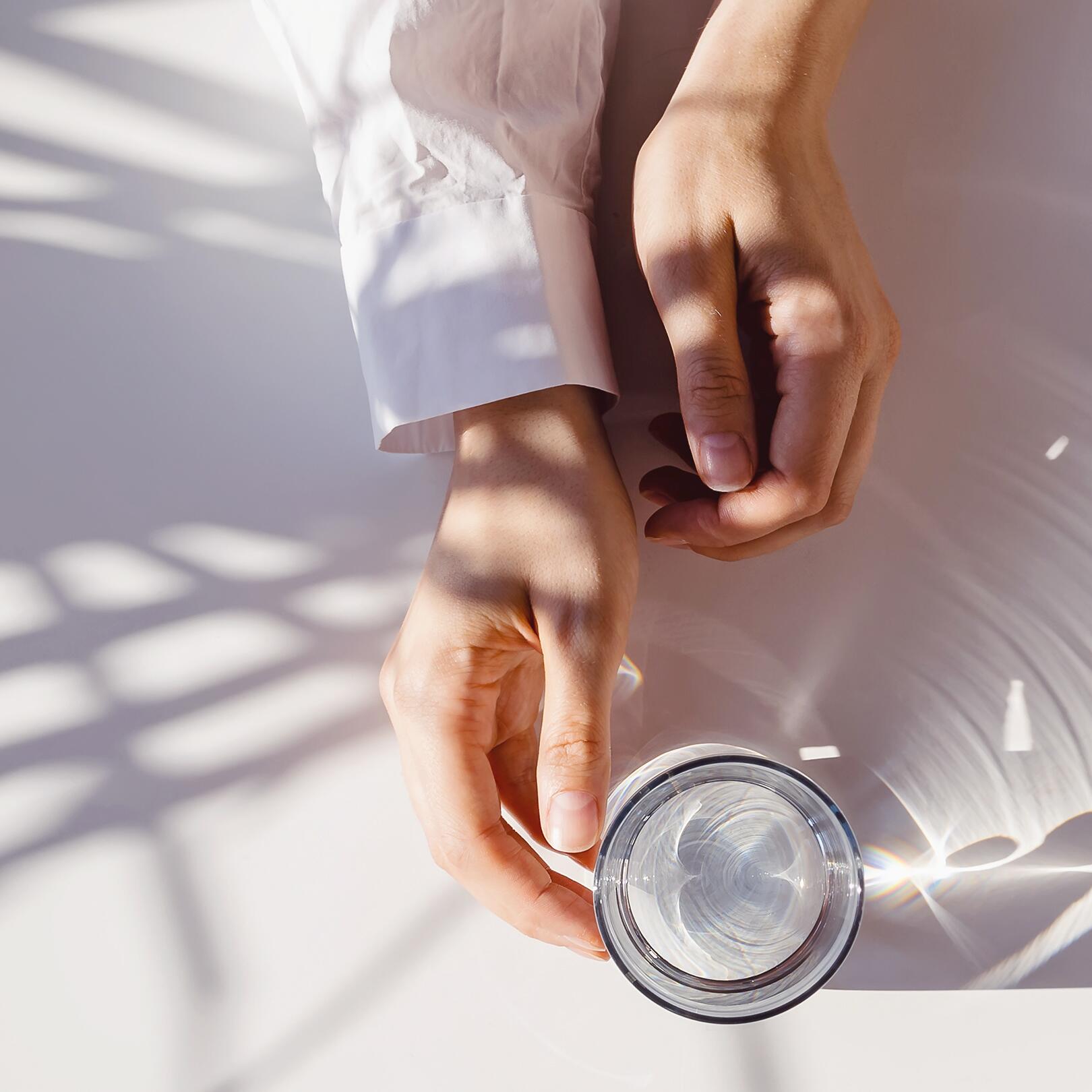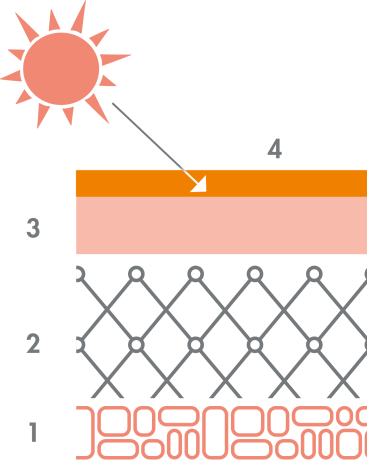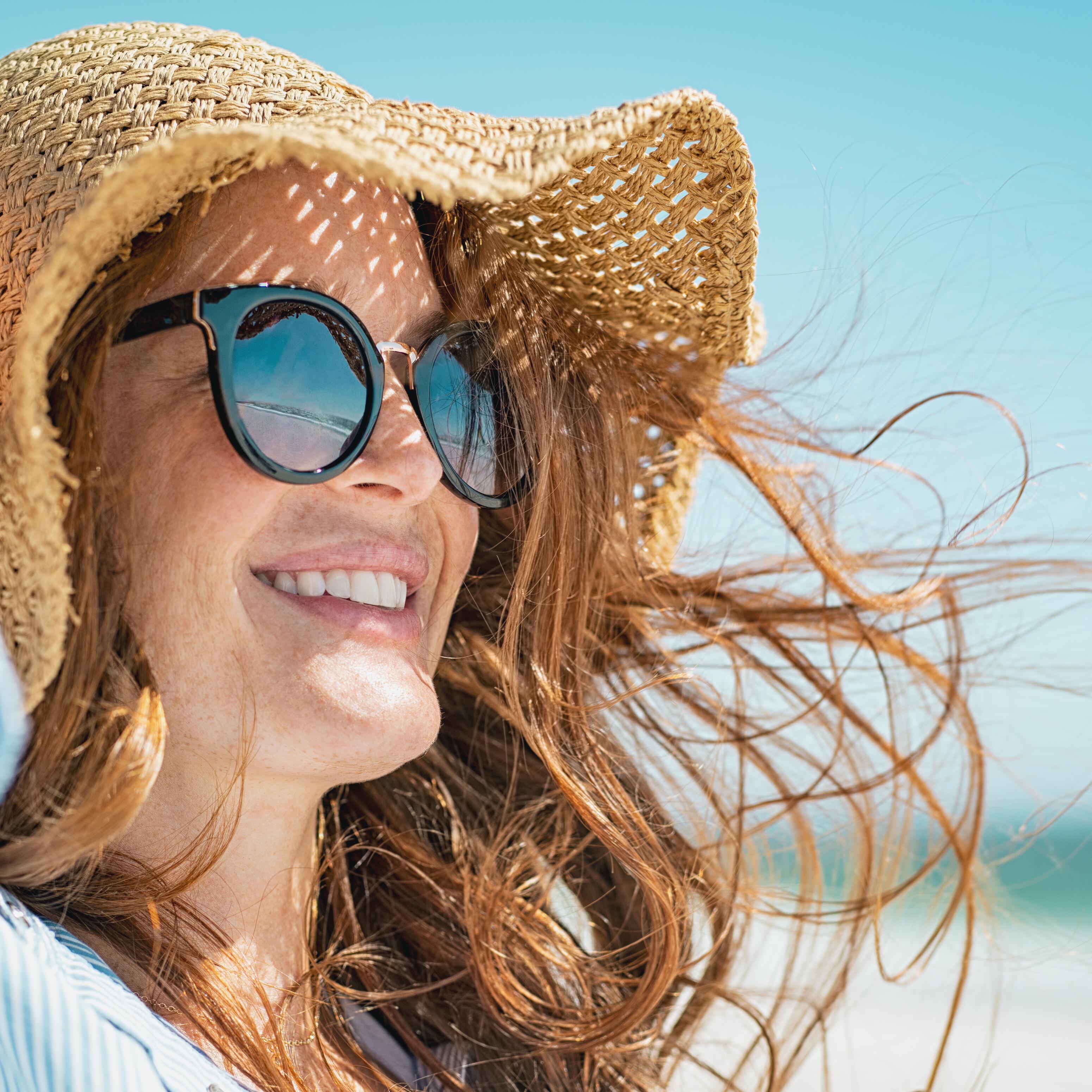The benefits and damage of the sun on your skin
Natural photoprotection and the role of melanin
The skin is already able to defend itself "on its own" against the aggression of UV rays. Hair, the corneal barrier and the melanin barrier are some of the means available to the skin so it can defend itself. Melanin, a natural skin pigment produced by melanocytes, the cells that specialise in tanning, varies from one individual to another depending on their phototype. Melanin pigmentation is the body's most developed photo-protective system: it absorbs more than 90% of the UV rays that pass through the corneal layer.
Melanin absorbs UV rays to prevent them from penetrating the deeper, more vulnerable layers of the skin. When there is a lot of melanin, the keratinocytes grow and the corneal layer thickens.
This pigment defence varies from one individual to another, but the more pigmented the epidermis, the better it will resist the sun's aggression. It’s also important to protect yourself in other ways.


In small quantities, the sun is beneficial: it's essential for the synthesis of vitamin D, playing a key role in bone calcification.
The sun's UVB rays promote the synthesis of vitamin D, the main factor in bone growth. And used under medical supervision, UV radiation can treat a number of diseases, including rickets, psoriasis, eczema and jaundice.
Exposure to the sun for 10 to 15 minutes, 2 to 3 times a week, is sufficient to ensure that you meet your vitamin D requirements and prevent the onset of rickets; it is also beneficial in preventing osteoporosis in the elderly.
I get sun allergy every year, from the first time I go out in the sun. It fades after a week if I use my sun cream daily.
Emilie
38 years
There are several forms of sun allergy, and benign summer sunburn is the most common. It manifests itself as redness, an eruption of small, slightly raised red blemishes or papules, and itching sensations where your skin has been exposed to the sun. It is most often found on exposed areas such as the neckline, shoulders, arms, back of hands and feet.
Understanding sun allergy
Sun lentigos, also commonly known as "sunspots", or "age spots” are one of the most visible effects of skin ageing. They are the result of melanin being deposited in the epidermis or dermis. This is a common form of hyperpigmentation that appears as small, flat, darkened areas that are light brown to black in colour. These sunspots are found on the areas most exposed to the sun: the face, neck, shoulders, décolleté, forearms and back of the hands.
You have probably heard this expression used by dermatologists without really knowing what it means. When we talk about “sun capital” or our ability to protect ourselves from sun damage, we’re referring to the amount of UV radiation that the skin can withstand without suffering damage (e.g. premature ageing or skin cancer). This capacity is genetically determined at birth, it cannot be renewed and it depends, among other things, on your phototype. Our ability to withstand sun damage is far from unlimited, which is why we need to protect it: by 20 years of age, we’ve already used 50% of our capacity.
- 1: Hypodermis; 2: Dermis; 3: Epidermis; 4: Sunscreen
FRIENDLY, EXPERT ADVICE
Some treatments increase the skin's sensitivity to the sun and extra care should be taken before exposure. This is called photosensitisation.
Find out more
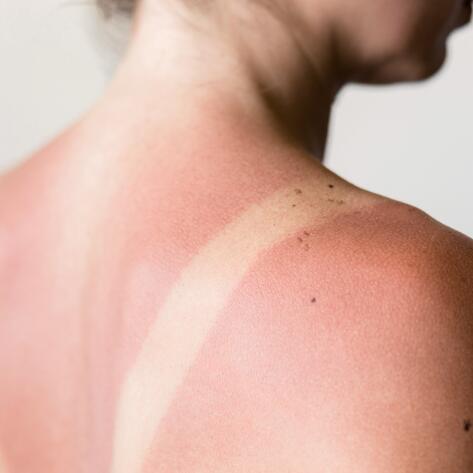
Sunburn (or solar erythema) is an inflammatory response of the skin caused by exposure to UV radiation. There are four degrees of solar erythema burns. The severity varies according to skin type or phototype, individual UV sensitivity, genetic factors, duration and frequency of exposure and the intensity of solar radiation.
Pregnancy mask, or melasma, is due to an overproduction of melanin, the pigment responsible for the colour of the epidermis, by the melanocytes. It mainly (but not only) affects pregnant women, where it is triggered from the 4th month of pregnancy.

If you're worried about sun exposure and the risks involved, there are proven methods for "sunless tanning". One solution is to apply a self-tan that colours the surface layer of the skin.
The sun is a false friend to acne. While it dries out acne outbreaks by thickening the skin initially, the clogged skin "gets even" a few weeks after sun exposure by releasing excess sebum again (this is known as the acne rebound effect).
There are many ways in which the sun can harm the skin. Ultraviolet light can cause irreversible damage, and in the most severe cases, death. Exposure to the sun is risky. On the skin, it causes sunburn, premature ageing, allergies and, in the most serious cases, cancer (melanoma and carcinoma). The only certain way to avoid the risk of sun damage is not to expose the skin to it.
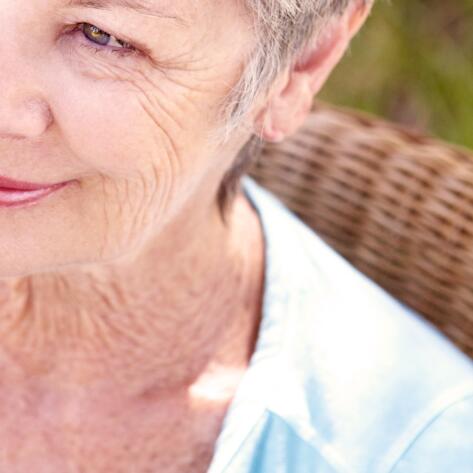
In addition to UV radiation, researchers have recently discovered a new enemy for the skin: visible light radiation (in the form of visible high energy blue light). This type of radiation is harmful because it attacks all the cellular constituents: lipids, proteins and DNA. The damage occurs over the long term, hence the absolute necessity, in terms of public health, to protect yourself as early as possible and throughout your life.
Everything you need to know about blue light

WE ANSWER YOUR QUESTIONS
No, between 12 and 4 o'clock in the afternoon is the hottest time of day. Avoid sun exposure during this time.
Yes, UVB radiation promotes the synthesis of vitamin D, which plays a role in bone calcification.
No, the skin remembers everything! You're likely to get burnt in the same place on the skin as last time each time you're exposed to the sun. Repeated sunburn could double the risk of melanoma.
Sunscreen is essential, but you should also make sure your child is wearing a T-shirt, a wide-brimmed hat and sunglasses.
No! You need to reapply sun cream frequently to stay protected, especially after sweating, swimming or drying off with a towel. It is also important to apply sun cream 20 minutes before sun exposure.
UVB rays are as dangerous as UVA. Both cause skin ageing and the development of cancer. Unlike UVB, which causes sunburn, UVA rays affect the skin without any signs of having done so.
No. You’re protected against UVA and UVB rays and their harmful effects (blotchy skin rash caused by sun exposure and, in the long term, skin aging), but the tanning process is not necessarily blocked. After several days of gradual exposure, you’ll get a nice tan that lasts a long time without burning.
Clouds only block a small part of the sun's rays. Cloud cover can allow up to 95% of UV rays to pass through. So even on cloudy days, be careful!
Never forget that a tan does not protect against sunburn. Moreover, tanning does not block UVA rays, which are responsible for skin cancer in the long term.
OUR SOLUTIONS TO PROTECT OUR FUTURE
Eau Thermale Avène skin care products are designed to protect the skin and respect the oceans.
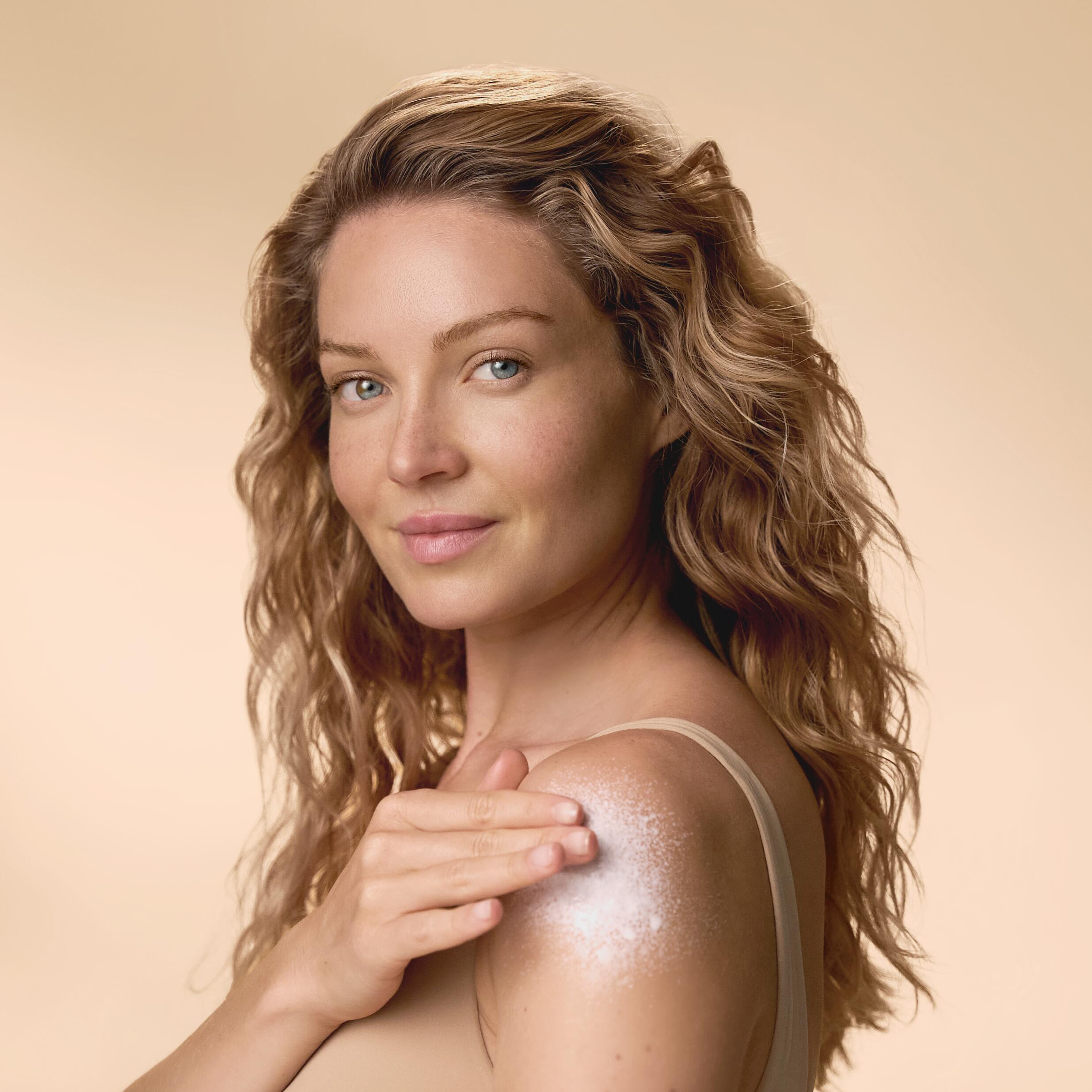
OUR SOLUTIONS TO PROTECT OUR FUTURE
The ultra-broad-spectrum suncare product meets the highest requirements for the skin while minimising our impact on the environment.
NEWSLETTER
We're always here for your skin!
All our advice on how to take care of your skin day to day.

Which skin care routine should you adopt?
Identify what it really needs with the help of our experts and discover the most suitable skin care routine for you.

